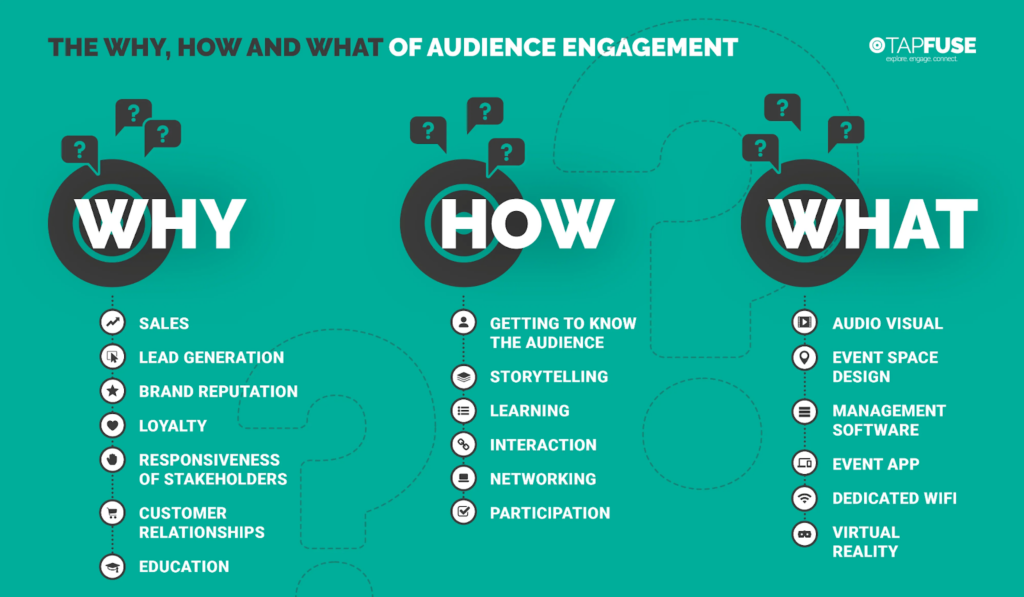Table of Contents
ToggleToday, brand management has evolved into a dynamic, always-on discipline where digital ecosystems dictate perception and value. The rise of social media, review culture, and algorithm-driven discovery has fundamentally shifted power to consumers, making online presence not just important, but existential for business success. Here’s what modern brand management demands:
1. The Democratization of Brand Narratives
- User-Generated Content (UGC) as Authority: 70% of consumers trust peer reviews over branded content. TikTok unboxings, Instagram Reels, and Reddit AMAs shape perception more than corporate messaging. Brands must facilitate, not control, these conversations.
- Real-Time Co-Creation: Brands like Glossier and LEGO actively involve communities in product development via social polls and feedback loops, turning customers into collaborators.
2. Platform-First Storytelling
- Tailored Micro-Strategies:
• TikTok: Authenticity-driven, snackable storytelling (e.g., Duolingo’s viral mascot).
• LinkedIn: B2B authority-building through industry insights.
• Instagram: Visual identity + shoppable touchpoints. - Adapt or Fade: A generic cross-posted message feels outdated. Platform-native content (e.g., vertical video for TikTok/Reels) is non-negotiable.
3. Data as the Compass
- Sentiment Analysis & Predictive Tools: AI-powered platforms (Brandwatch, Sprout Social) track real-time brand health, predicting crises before they trend. Example: A hotel chain spotting “dirty pool” review patterns and deploying cleaners proactively.
- Personalization at Scale: Netflix-style algorithms now drive marketing—Spotify’s “Wrapped” campaigns use individual data to create viral personalized brand experiences.
4. The Reputation Economy
- Zero-Margin for Error: 1 viral complaint can erase $1M in ad spend. Teams must:
→ Monitor 24/7 (tools: Mention, Hootsuite)
→ Escalate in minutes (not days)
→ Empower frontline staff (e.g., Starbucks baristas resolving Twitter complaints). - SEO = Brand Survival: 75% never scroll past Page 1 of Google. Managing search results (pushing positive content, addressing negative SEO attacks) is core to reputation.
5. Ethical Branding: The New Currency
- Values Over Vanity: Gen Z chooses brands based on sustainability (73%) and ethics (68%). Action matters more than slogans:
→ Patagonia: “Don’t buy this jacket” campaign + Earth tax.
→ Ben & Jerry’s: Justice-focused activism. - Greenwashing Backlash: Token gestures are exposed instantly. Radical transparency (e.g., Allbirds carbon footprint labels) builds trust.
6. Employee Advocacy Amplification
- Crisis Mitigation: Empowered employees can swiftly counter misinformation (e.g., Microsoft engineers debunking Azure myths on Reddit).
- Humanizing the Brand: Employees have 10x more reach than corporate channels. Brands like Adobe and Dell train staff to share authentic stories, blending personal and professional narratives.
What is Brand Management?
At its core, brand management involves strategically cultivating a unique, consistent, and compelling identity and reputation for your company. It’s the deliberate process of shaping how your target audience perceives you at every touchpoint, setting you apart from competitors and fostering deep resonance with customers.
This goes far beyond just visual elements like your logo and website design, encompassing everything from your company’s mission, values, and personality (expressed through tone of voice) to the quality of your products/services and the customer experience you deliver.

Image Source: Filestage
Brand Strategy
- Defining Core Elements: Effective brand management starts with a clear strategy. This involves defining your brand purpose (why you exist beyond profit), mission, vision, core values, target audience personas, and unique value proposition (UVP). What specific problem do you solve, and for whom?
- Positioning: How do you want your brand to be perceived relative to competitors in the minds of your target audience? What space do you uniquely own? This strategic positioning guides all subsequent actions.
Brand Identity
- Visual Identity: As mentioned, this includes logo, color palette, typography, imagery style, and overall design language applied consistently across all materials (website, packaging, ads, social media, office signage, uniforms).
- Verbal Identity: This defines your brand’s “voice” – its personality (e.g., authoritative, friendly, innovative, playful) expressed through tone, messaging pillars, key phrases, and communication style in all copy (website, social media, ads, customer service scripts, internal comms).
Online Perception
In the past, brand management may have been focused primarily on traditional advertising methods such as print ads or television commercials. But now, businesses must also consider how their brand is perceived online. This means actively managing your online reputation through strategies like search engine optimization (SEO), social media engagement, and responding to customer reviews.
- Beyond Traditional: While traditional advertising (print, TV) remains relevant for some, the digital landscape is paramount. Brand management now demands active stewardship of your online reputation.
- Holistic Online Presence: This encompasses managing visibility and perception through Search Engine Optimization (SEO), Search Engine Marketing (SEM), social media platforms, online review sites (Google, Yelp, industry-specific), forums, news mentions, and even employee profiles on LinkedIn.
- Proactive Listening: Utilizing social listening tools and brand monitoring software to track mentions, sentiment, and conversations about your brand across the web is essential for timely response and understanding your brand’s health.
Consistency Across Channels
One important aspect of building a strong online presence is consistency. Your brand should be easily recognizable across all digital channels. This means using the same color scheme, fonts, and messaging on your website, social media accounts, and any other online platforms where your business is represented.
Consistency helps build trust and familiarity with your audience, making it more likely that they will choose your products or services over those of a competitor.
- Omnichannel Cohesion: Whether a customer interacts with your brand on your website, a mobile app, social media, email, in a physical store, or via a customer service call, the core identity, messaging, and quality of experience must be seamlessly consistent. This builds trust, recognition, and reliability.
- Internal Alignment: Consistency starts internally. Every employee, from leadership to customer service, must understand and embody the brand values and messaging. Robust brand guidelines are crucial tools for ensuring this alignment across departments and external partners.
Audience Engagement

Image Source: Medium
Engaging with your audience is another key component of successful brand management in the digital age. Social media provides an excellent opportunity for businesses to connect with customers and potential customers in real time.
By regularly posting updates, answering questions, and responding to feedback, you can demonstrate that your company values its customers and is committed to providing them with the best possible experience.
- Building Relationships: As highlighted, social media and digital platforms offer unparalleled opportunities for two-way communication. Go beyond broadcasting; actively listen, respond authentically, join relevant conversations, and provide value (insights, entertainment, support).
- Community Building: Encourage user-generated content (UGC), create branded hashtags, foster online communities (forums, groups), and make customers feel like valued participants, not just recipients. Engaged communities become powerful brand advocates.
- Personalization: Leverage data (ethically) to tailor communications and experiences, making interactions feel more relevant and personal to individual customers.
Monitoring & Responding to Online Reviews
Additionally, brand monitoring and responding to online reviews are essential for maintaining a positive brand image. According to one study, 91% of consumers read online reviews before purchasing.
Responding promptly and professionally to both positive and negative reviews shows that your company cares about its customers and is willing to address any concerns they may have.
- Review Vigilance: Actively monitor and professionally respond to online reviews on all relevant platforms (Google, Trustpilot, industry sites, social media). Acknowledge praise and address criticism constructively and promptly.
- Crisis Management: Have a proactive plan for handling potential PR crises or negative viral events online. Speed, transparency, and taking responsibility are key.
- Customer-Centricity: Demonstrating responsiveness to feedback, both positive and negative, shows customers they are heard and valued, directly impacting loyalty and perception.
Good SEO

Image Source: Semrush
Finally, SEO plays a critical role in building a strong online presence. Optimizing your website and content for relevant keywords can help ensure that your business appears at the top of search results when potential customers are searching for products or services like yours. This not only increases visibility but also establishes credibility and authority in your industry.
Brand Management Performance & Health
- Key Metrics: Brand management isn’t just action; it’s measurement. Track key performance indicators (KPIs) such as:
- Brand Awareness: Reach, impressions, search volume for your brand name.
- Brand Perception: Sentiment analysis (positive/negative/neutral mentions), survey data (brand attribute associations).
- Brand Engagement: Social media interactions (likes, comments, shares), website engagement metrics (time on site, bounce rate), email open/click rates.
- Brand Loyalty & Advocacy: Net Promoter Score (NPS), repeat purchase rate, customer lifetime value (CLV), referral rates, UGC volume.
- Brand Equity: The overall commercial value derived from consumer perception (often measured through premium pricing power, market share).
Evolution & Adaption
- Staying Relevant: Markets, customer preferences, and technologies evolve. Effective brand management involves continuous monitoring of trends, competitor activity, and audience shifts.
- Refreshing vs. Rebranding: Knowing when to subtly refresh brand elements (e.g., logo modernization, tone adjustment) to stay current versus undertaking a full rebrand requires strategic insight and careful execution to maintain existing equity while signaling positive change.
Overall, effective brand management in the digital age requires a multi-faceted approach that encompasses consistency, engagement, review management, and SEO. By prioritizing these areas, businesses can create a strong online presence, coupled with the right digital shelf analytics platform, that attracts and retains customers while setting themselves apart from competitors.
Frequently Asked Questions (FAQs)
What is the difference between marketing and brand management?
Marketing is a broader concept that encompasses various activities aimed at promoting products or services. It involves understanding customer needs, creating awareness, pricing, distribution, and communication strategies. In essence, marketing focuses on driving sales and revenue by reaching the right audience.
Brand management, on the other hand, is a subset of marketing. It specifically deals with building, maintaining, and enhancing the brand’s image and reputation.
Here are the key differences:
Scope:
Marketing: Encompasses all activities related to product promotion, pricing, distribution, and communication.
Brand Management: Focuses exclusively on managing the brand’s identity, perception, and equity.
Objective:
Marketing: Aim to drive sales, acquire customers, and generate revenue.
Brand Management: Aims to create a strong emotional connection with customers, enhance brand loyalty, and build long-term value.
Time Horizon:
Marketing: Often short-term, with immediate goals.
Brand Management: Takes a long-term perspective, focusing on sustained brand health.
What are the three main concepts of brand management?
Brand Building:
Involves developing a brand’s image and reputation to create long-term benefits for brand awareness and value.
It includes crafting a unique brand identity that resonates with the target audience.
Brand Awareness:
Refers to the probability that consumers are familiar with the brand’s existence and availability.
Effective brand awareness ensures that potential customers recognize and recall the brand.
Brand Equity:
Represents the overall value of the brand in the eyes of consumers.
It combines tangible and intangible aspects, including reputation, trust, and emotional associations.
Strong brand equity leads to customer loyalty and competitive advantage.







